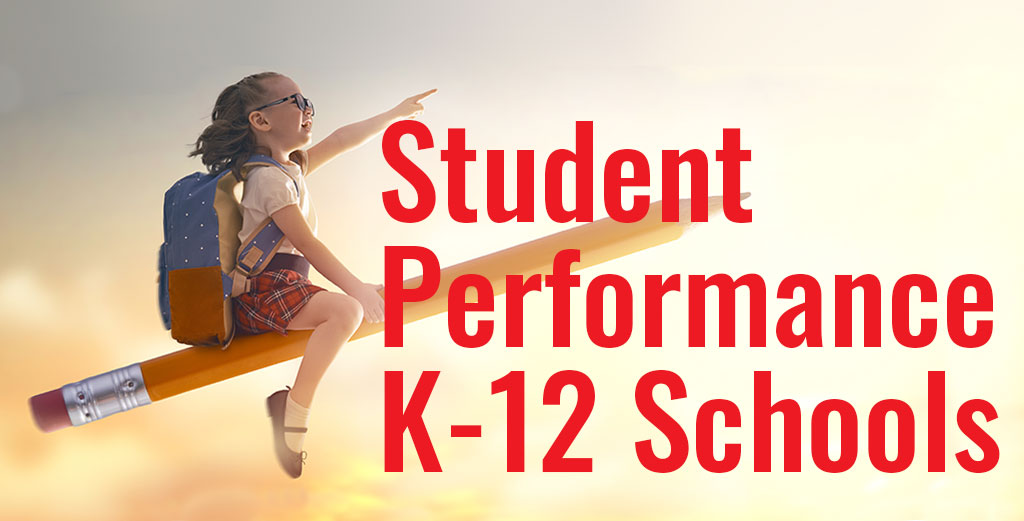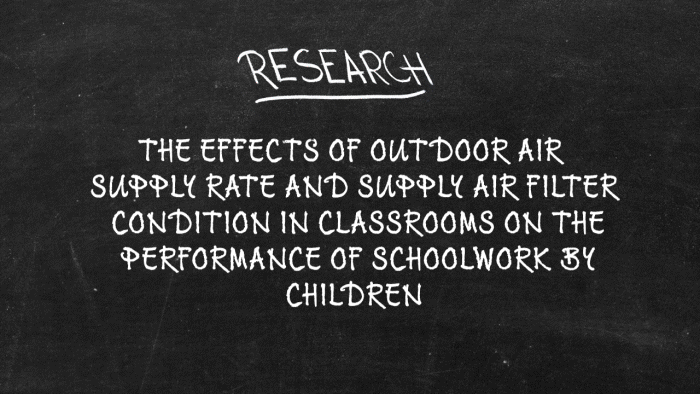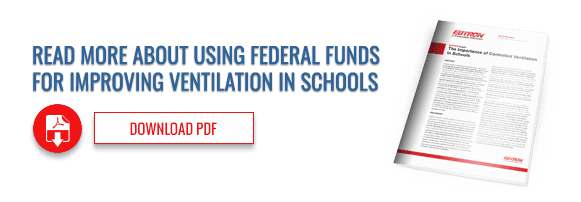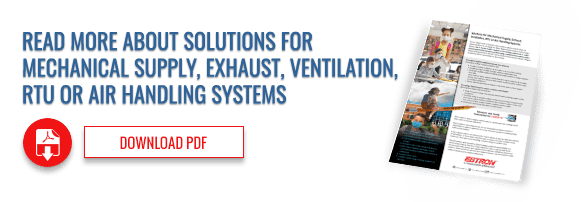Numerous studies over the past 2 decades in the U.S. and around the world show not only a correlation between ventilation and student performance, but also that schools are substantially under-ventilated. Disadvantaged communities may be impacted further by poor Indoor Air Quality (IAQ), which may make it harder to hire high-performing teachers and keep the best students.


Research connecting ventilation and IAQ to academic performance
IAQ-renovations may be a more cost-effective way to improve standardized test scores than class size reductions.
An economic analysis of K-12 school IAQ improvements showed significant impacts in standardized tests, where the average mold project increased pass rate 3-4% and the average ventilation improvement project increased pass rate 2-3%. Improved IAQ may also results in decreased respiratory irritation and missed school days. Absenteeism decreases the quantity of schooling received, which may negatively affect human capital accumulation and result in lower test scores.
THE VENTILATION CONNECTION
_____
A lack of ventilation in a classroom is a lack of “fresh air”, and is often indicated by high carbon dioxide (CO2) levels. This is due to the fact that all humans breath out CO2, however the amount generated is dependent upon many variables (activity level, age, gender, body mass). Thereby younger children expel less CO2 than adolescents or adults, although children consume more air per body mass than adults. Therefore, it is important that developing children get generous quantities of fresh air. Studies have correlated high CO2 values to decision making performance and cognitive function.
Several ventilation in classroom studies have been documented. Some focused on K-12 students and academic performance showing improvements in math and reading. In all of these studies, there is significant evidence that the majority of classrooms examined are under-ventilated when compared to ventilation standards and building codes. Typically, the standards and codes result in an a complete room air change with fresh air every 20 minutes, or equal to 3 air changes per hour (ACH). These rates however are based on acceptable body odor, and not enhanced performance or other metric. For dilution of COVID-19 for example, 6 ACH is recommended. Lower ventilation rates result in students becoming less attentive and concentrating less on what the teacher is saying. Low ventilation affects the Power of Attention, or the ability to concentrate at a particular moment. Lower ventilation rates also impact the health of all occupants.


NOT ALL VENTILATION IS EQUAL
_____
Not only are schools being under-ventilated, but in many cases the ventilation rates are not consistent. Differences exist from classroom to classroom, permanent structure versus temporary, type of mechanical equipment in one space versus another, and during changes in seasons. An important statement in the conclusion of the most recent research is: “Mechanical system types and adequate ventilation rates play a significant role in classroom indoor air quality, and these factors show significant associations with student learning outcomes”.
It’s proven that mechanical ventilation is more effective than opening doors and windows for natural ventilation. When designed, installed, and controlled well; mechanical ventilation will also be acoustically better, provide better IAQ, be more thermally comfortable, and more secure. Although, there are many schools that are currently without mechanical ventilation and air conditioning, the economic justification for improvements is strong. With significant federal funding now available, there is a strong argument to invest in mechanical ventilation with airflow measurement for healthier and higher performing schools.
Sustainability is important, however, all too often the amount of the potential energy saved by reducing ventilation can easily be offset by increased productivity and improved health. One paper’s conclusion expressed this assessment by stating: “Educating children is one of the most important ways of benefiting future generations, so we should not allow energy and resource conservation measures to result in classroom conditions that reduce children’s ability to perform schoolwork. Reducing ventilation and allowing temperatures to vary over a wider range are counter-productive”.
IMPROVED VENTILATION = BETTER STUDENTS
_____
The variances in ventilation may be caused by mechanical degradation, differences in controls, human alterations, weather changes, and more. Regardless of the cause, without active measurement or control of the ventilation rates, there is no way to notify, alarm, troubleshoot, or automatically correct these disparities. Thereby, ventilation rates are likely to further degrade over time. Even if the problem is determined though inspection, CO2 measurement, or field airflow measurement, if there is no active measurement and control, then paying for a one time balance in airflow will likely result in the flow rates not being maintained.
Be aware of energy saving strategies and scheduling that can impact providing adequate ventilation. CO2 demand control ventilation (DCV) can cause under-ventilation due to CO2 lag or improper control assumptions. Some products claim the ability to reduce ventilation air, “because they clean it”. The result is less ventilation per person, high CO2 levels, and perhaps harmful by products such as ozone or hydroxyl radicals that can cause harm to the respiratory system. Scheduling may lead to ventilation being turned off when students are not in classes, however, janitorial services are active. This may cause the releasing VOCs into the space that may linger when teachers and children return or may result in a build up of moisture that may lead to mold growth. Learn more about Ebtron Solutions for Schools.

The Elementary and Secondary School Emergency Relief Fund (ESSERII) and the American Rescue Plan Act of 2021 allows for LEAs to use available funds for improvements, repairs, and upgrades to mechanical ventilation and control systems. Ventilation control is important mold prevention function.
Additional Resources Related to Ventilation Enhanced Performance in Schools
_____
The University of Nebraska – Lincoln
Mechanical system types and adequate ventilation rates play a significant role in classroom indoor air quality, and these factors show significant associations with student learning outcomes. In this study, seasonal variation was found in the ventilation rates of the classrooms.
School Environmental Effects on Student Achievement
The Center for Green Schools
One measureable impact that school buildings can have on teachers and students is in the area of air quality and ventilation.
The Impact of School Buildings on Student Health and Performance
• READ: McGraw Hill: Impact on Health
Environmental Protection Agency
Ventilation rates in most schools are below recommended levels. Growing evidence of the positive impact of outdoor air ventilation suggests a clear opportunity for improving health and academic performance.





